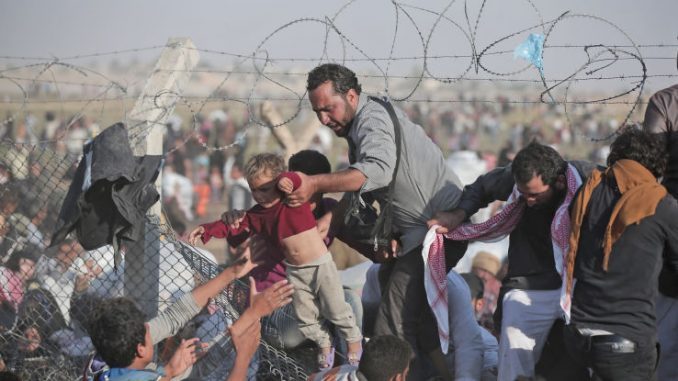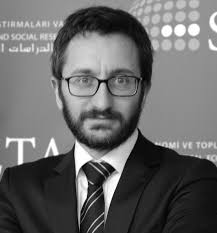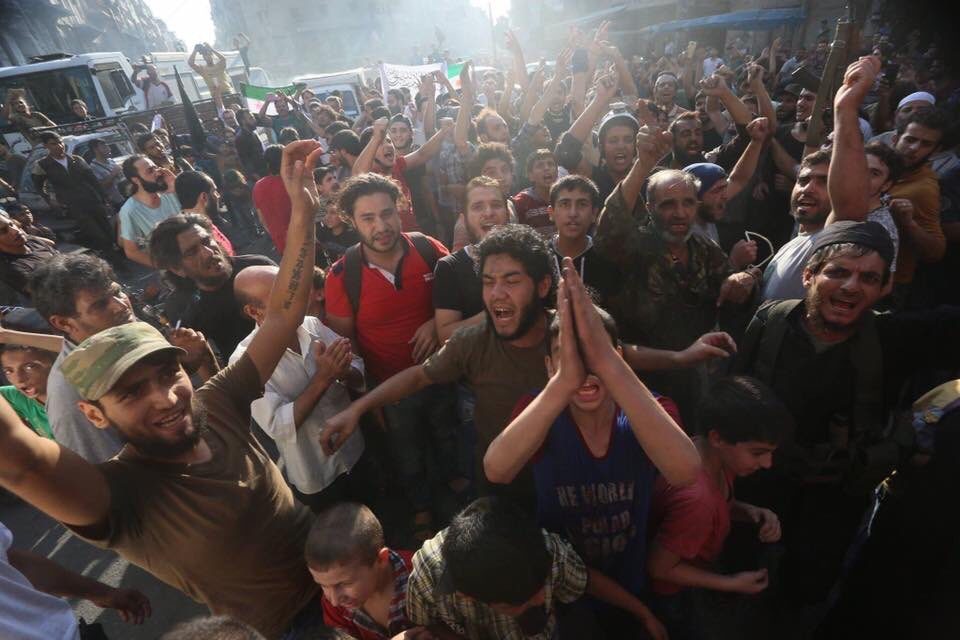
The subject of “safe zones” in Syria has been debated for years even as civilians continue to die and flee at the hands of Bashar al-Assad’s regime and other forms of violence. However, it became a hot topic recently when US president Donald Trump said he intends to achieve this idea on the ground and ordered his administration to start planning for it.
He said last week he would “absolutely do safe zones in Syria” for refugees escaping violence and that Europe had made a mistake by admitting millions of refugees.
Trump raised the issue publicly during an hour-long telephone call on Sunday with Saudi Arabia’s King Salman bin Abdulaziz and Sheikh Mohammed bin Zayed al-Nahyan, Abu Dhabi’s crown prince, the White House said.
Russian precautions
The US decision to make the safe-zones put it again on odds with Russia, which became the prominent player in the Syrian case and forces its view of the political solution after the previous US administration was weak and lost its chance.
The Kremlin meanwhile said a plan for safe zones should be thoroughly considered.
Asked to comment on the draft executive order, Russian President Vladimir Putin’s spokesman, Dmitry Peskov, underlined the importance to “thoroughly calculate all possible consequences” of the measure. He noted on Thursday that “it’s important not to exacerbate the situation with refugees.”
Peskov said the Trump administration did not consult Russia before announcing the plan to establish safe zones.
“No, our American partners did not consult with us. It’s a sovereign decision,” Peskov said on a conference call with reporters.
“It is important that this (the plan) does not exacerbate the situation with refugees, but probably all the consequences ought to be weighed up.”
In addition, Russian Foreign Minister Sergei Lavrov said on Wednesday that U.S. President Donald Trump should be more specific about his proposal to set up safe zones in Syria and said attempts to implement a similar policy in Libya had been tragic.
Lavrov said he hoped Russia could discuss the issue with the U.S. State Department once it had drawn up more detailed plans for the safe zones.
Lavrov said he did not think, from what he knew so far, that Trump was proposing to roll out safe zones in the same way as it had been done in Libya in 2011.
Syrian contradicting views
The regime and opposition, of course, had different views of the proposed idea. While the regime refused it and considered it a beach for sovereignty, the opposition welcomed it.
“The Americans have reshuffled the cards in a shocking way, and have brought the Russians back to square one,” said Yaser Alyoussef, spokesman for the rebel group Nour al-Din al-Zinki.
“The American plan is being studied and the operational steps have yet to be clarified up to now. But it is a surprise and a shock for the Russians and the Iranians.”
Another rebel official said forming a no-fly zone would either bolster an area where Turkish forces have intervened against Isis or areas run by US-backed Kurdish militias — either of which could inflame the conflict between Ankara and Kurdish groups.
“Any proposal should be approved by and coordinated with the Syrian government as it is the first and final decision maker. According to the UNSC resolution 2254, the Syrian authorities are responsible for protecting its people. If Trump wants to succeed in any proposal, he must first knock on the right door, coordinating it directly with Damascus or via Moscow, which coordinates fully with Damascus. The Syrian government is the exclusive administrator for its people and its geography,” a member of the Syrian parliament Mohammed Kheir Jasim Nadir said.
“The topic of safe zone was discussed between the United States and Saudi Arabia. My question is the following: will these safe zones be created on the territories of those two countries?! What a blatant violation of principles of the international law and relevant UN resolutions, which ’emphasize strong commitment to Syria’s sovereignty, independence and territorial integrity’!” Nadir underlined.
The UN sees it a bad idea
“Let’s not waste time planning safe zones that will not be set up because they will not be safe enough for people to go back,” Grandi said. “Let’s concentrate on making peace so that everything becomes safe. That should be the investment.”
“Frankly, I don’t see in Syria the conditions” to set up such zones in the country, “with the fragmentation, the number of actors, the presence of terrorist groups,” he added.
“It’s not the right place to think of that solution,” the official concluded.
His statement comes a few days after the UN chief also spoke out on safe zones, saying that some of them turned into catastrophes.
“We have nothing against the creation of areas where people can live in safety. That can never undermine the right to seek asylum so when people for instance decide to leave safe zones, to not allow people to leave these zones, this is something that is not acceptable,” UN Secretary-General Antonio Guterres said.
“Difficult to comment when we don’t know what it is, let’s see what it is and then we’ll make the adequate comment,” he added.
The Syrian crisis began as a peaceful demonstration against the injustice in Syria. Assad regime used to fire power and violence against the civilians and led to armed resistance. 450.000 Syrians lost their lives in the past five years according to UN estimates, and more than 12 million have lost their homes.



